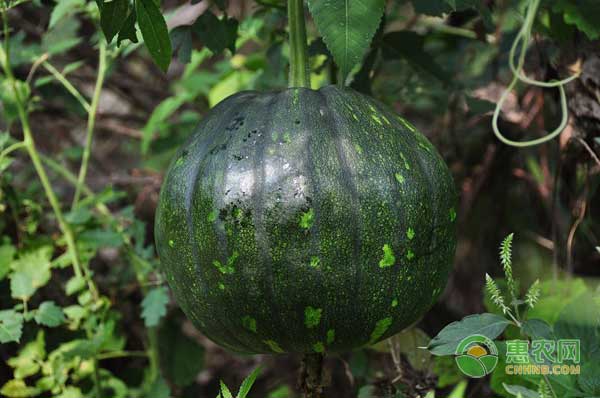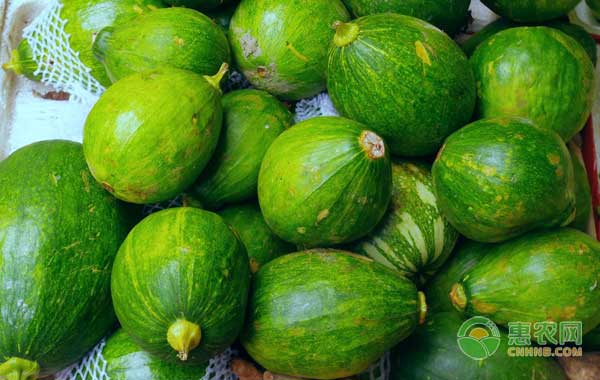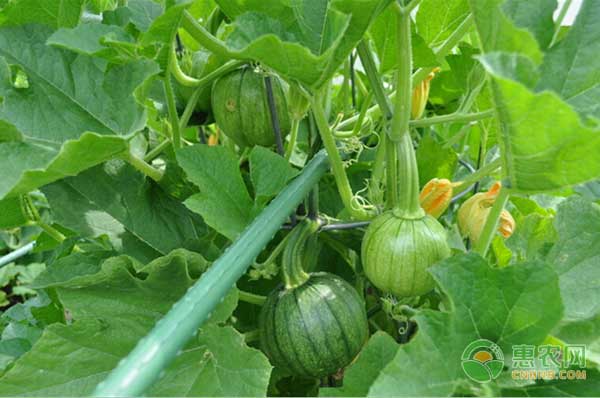Pumpkin is one of the more common vegetables in life. Eating pumpkin is good for your health. Pumpkins come in a variety of shapes and shapes, and the taste varies. Xiao Bian today is going to introduce a very early-maturing pumpkin variety - the cultivation technology of Xiangyan early in the morning, for the reference of the majority of vegetable farmers.
At present, the main varieties of pumpkin in China are mainly the type of sweet-sweet pumpkin that eats the old melon flesh and the type of bell-squash that eats the tender melon. At present, the planting area of ​​the tender pumpkin has accounted for more than 30% of the pumpkin planting area, because of its unique taste. Loved by people. Xiangyan Early Indica is a very early-maturing short-gourd-shaped tender pumpkin variety with a fresh and sweet taste. It adds a delicious taste to the “Spring†period of the Yangtze River Basin.

1 Characteristic characteristics
This variety is a hybrid variety of very early mature tender pumpkins, starting from emergence to tender melons for 30 to 40 days. The plant grows steadily, the internodes are short and not easy to grow, and the adaptability to fertilizer and water is strong. The melon is denser, and the main and side vines can produce female flowers. The first female flower of the main vine appears in 5 to 7 knots, and generally 3 to 5 can be continuously produced. The tender melon is rounded to a short gourd shape, and the peel gradually turns from pale green to dark green, with a discontinuous light-colored speckle. The edible melon single melon has a mass of about 450 g, and the taste is tender, tender, tender and sweet. It is suitable for early spring protection in the Yangtze River Basin and open field cultivation in spring and autumn.
2 Cultivation techniques
2.1 Soil preparation and fertilization
It is generally selected for field planting with flat terrain, fertile soil and easy irrigation. Remove the weeds in the field about half a month before planting, re-apply the organic base, mix with the chemical fertilizer, and then turn the gully to open the gully. Generally, the gully is 0.25 m deep and 0.4 m wide at a distance of about 2 m. A sorghum of 1.8 to 2.0 m covered with a black or silver-gray mulch.
2.2 Seeding and seedling
According to the projection period, the protected area in Hunan can be planted in January, and the open field can be planted in late March in early March. Because the temperature in the early spring is low and the rainy days are more suitable for live broadcast, it is better to use foam seedling tray seedlings. Before soaking seeds, you can first soak for 1~2 h. When soaking seeds, first use hot water at 55 °C for scalding, and keep stirring for 10~15 min. After natural cooling, continue to soak for 2.5~3.5 h, then wash the seed coat, wash the mucus, and drain. The dry water is wrapped in a wet towel and moisturized with a plastic film on the outer bread. It is placed at a constant temperature of 30 °C for 36 to 48 hours. After the seeds are white, they are planted in a seedling tray. After sowing, the nutrient soil is placed in the water bed, and then the small arch shed is covered with the arch film. At this time, the seedbed should be kept warm and moisturized. After the emergence, the arched arch film can be removed at noon and covered in the morning and evening. When the seedlings have 1~2 true leaves, the arch film can be removed, and the water can be properly controlled before planting.

2.3 Planting and transplanting
When the open field cultivation is planted, the ground temperature should be stable above 10 °C, the seedling age is about 25 days, and when the seedlings have 2~4 true leaves, the cold-warm head should be selected in the area where the cold spring is more cold. Before planting, each raft was planted at a distance of about 0.6 m from the plant and planted in two rows. The seedlings in the seedling tray are planted in the caves, and watered after planting to ensure that all the seedlings survive. "Human" frame or hanging vine cultivation generally plants about 1,000 plants per 667 m2, and climbs to cultivate 500-600 plants per 667 m2.
2.4 Water and fertilizer management
After the melon seedlings are planted and restored to growth, they should be combined with drought resistance, and the thinly decomposed human and animal manure or urea solution should be applied 1 or 2 times. Excessive nitrogen fertilizer in the early stage of pumpkin growth, it is easy to cause stems and leaves to be long and not easy to sit. In the harvesting period of tender melon, if the color is yellow, you can apply thin urea liquid or thinly decomposed human and animal manure once a week, or drill hole at 0.1 m from the plant before rain, and apply compound fertilizer 10~15 kg. /667 m2. In areas with more rain in spring and summer, irrigation is generally not required. In case of high temperature and dry weather, it is necessary to timely water and drought to protect the seedlings, usually in the morning or evening watering irrigation. Where there are conditions, rhizosphere drip irrigation can be selected. Because the variety is stable and not easy to grow, the greenhouse cultivation begins to pay attention to the uniform supply of fertilizer and water to avoid the appearance of malformed melon or premature senescence of plants.
2.5 Pruning fruit
When the vine grows to 20~30 cm, all the side vines are removed, and only the main vines are left for single vine pruning to facilitate the supply of nutrients. And in time, the vines are put on the shelves to facilitate ventilation and light transmission. When the melon is stable, in order to ensure a sufficient number of functional leaves, the pruning should be carried out moderately according to the growth, and generally 6 to 10 can be continuously harvested. If the female flowers in the early spring are opened earlier than the male flowers, the zucchini pollen may be used for artificially assisted pollination or the female flower corolla or flower stalk may be applied with the fruiting spirit. If the female flower is in continuous rainy days, artificial assisted pollination is required to increase the fruit setting rate. Because the female is strong, when the fruit is too much, it should pay attention to the fruit thinning and choose the young fruit with better fruit shape.

2.6 Harvest at the right time
Generally, the product can be harvested 10 days after the flowering of the female flower, and the quality of the single melon is 0.4 to 0.5 kg. In order not to affect the normal growth of the subsequent melon, the root melon should be picked early, and the qualified tender melon should be harvested in time and in a timely manner without leaving the old melon. Picking time should be selected in the early morning or evening, use scissors to cut light and light, to avoid scratching the melon skin.
2.7 Pest Control
The prevention and control of pests and diseases should be combined with prevention and control, supplemented by the prevention and control of chemical pesticides. There are fewer pests in the growing season of the pumpkin. When transplanting, attention should be paid to the prevention and control of small tigers. Generally, 10% imidacloprid wettable powder 4 000~6 000 times solution can be sprayed to prevent aphids in the early stage of plant growth; yellow rubber plate and yellow pot can be hanged in pumpkin squash to prevent and control yellow squash, and 10% cypermethrin emulsifiable concentrate can also be used. 1500 times liquid control. During plant growth and fruiting, pay attention to clearing the ditch and reduce the humidity in the field; timely pruning to remove the old leaf disease leaves and improve the field permeability. Generally, 70% of the chlorpyrifos (ethyl phosphine bromide) WP can be used to irrigate or spray the disease to prevent the disease; 43% Plex (Pymocarba sulphate) water agent 5,000 times liquid or 12.5% ​​fast Poly ( oxazolol) 20,000 times of wettable powder to prevent powdery mildew; 64% of anti-virus WP 10,000 times solution to prevent downy mildew. Pesticides should be low-toxic, high-efficiency, low-residue drugs, and pay attention to alternating use and safe medication.
Very early mature tender pumpkin Xiangyan early emergence of seedlings to tender melons began to accept 30 to 40 days, short growing period, timely harvest and economic benefits. It can be widely promoted in the middle and lower reaches of the Yangtze River.
We are a professional Chinese supplier of Nootropic Material; we supply various products of Brian Food; and we can providing product images and basic parameters with each Intelligence Enhance Material and Brian Food, like Phosphatidylserine Powder, Ginkgo Biloba Extract, Huperzine A, etc. Look forward to your cooperation!
Phosphatidylserine Powder,Nootropic Material,Ginkgo Biloba Extract,Huperzine A,Brian Food
Xi'an Quanao Biotech Co., Ltd. , https://www.quanaobiotech.com